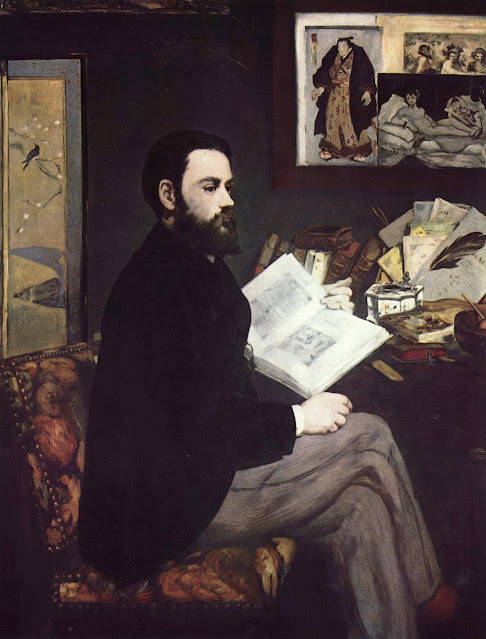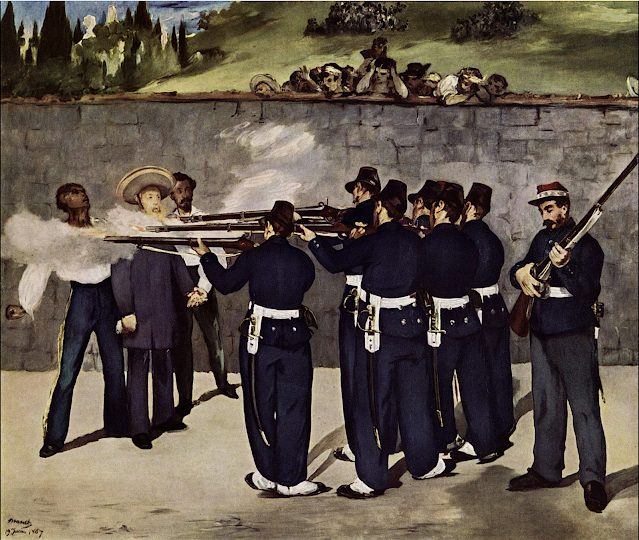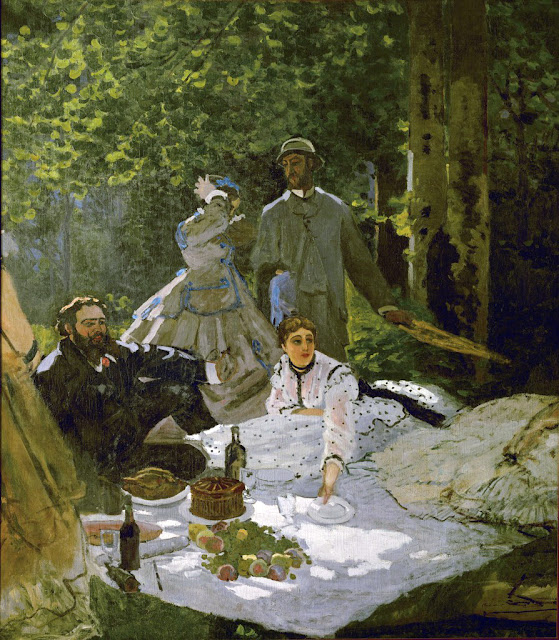Édouard Manet
(1832 - 1883)
Berthe Morisot with a Bouquet of Violets (French: Berthe Morisot au bouquet de violettes) is an 1872 oil painting by Édouard Manet. It depicts fellow painter Berthe Morisot dressed in black mourning dress, with a barely visible bouquet of violets. The painting, sometimes known as Portrait of Berthe Morisot, Berthe Morisot in a black hat or Young woman in a black hat, is in the collection of the Musée d'Orsay in Paris. Manet also created an etching and two lithographs of the same composition.
Manet became acquainted with Berthe Morisot in 1868. She was the grand-niece of Fragonard, and also a painter; Morisot and Manet influenced each other's work. He painted her portrait many times, including his earlier work The Balcony. She married Manet's brother Eugène in 1874.
https://en.wikipedia.org/wiki/Berthe_Morisot_with_a_Bouquet_of_Violets
Berthe Morisot with a Bouquet of Violets
1872
Oil on canvas
55.5 x 40.5 cm
Musée d'Orsay, Paris
https://www.musee-orsay.fr/en/artworks/berthe-morisot-au-bouquet-de-violettes-100102






























.jpg)


.jpg)



.png)
